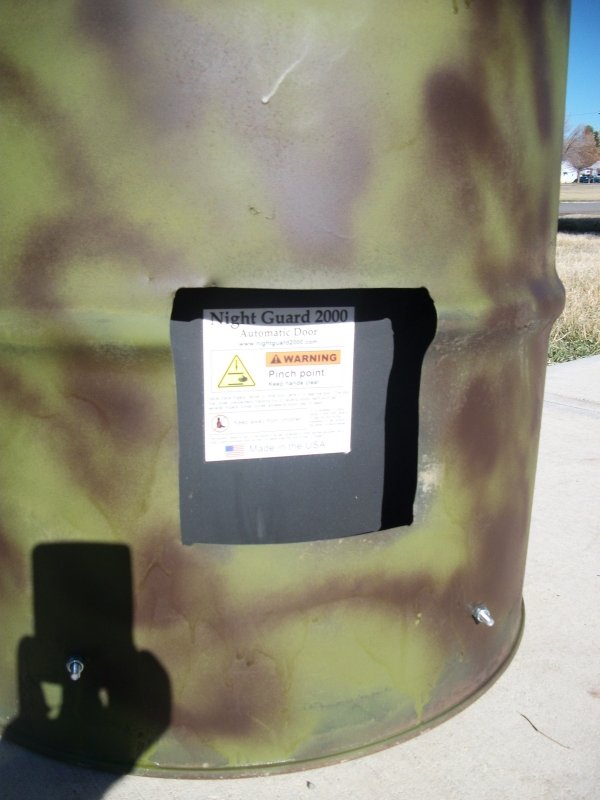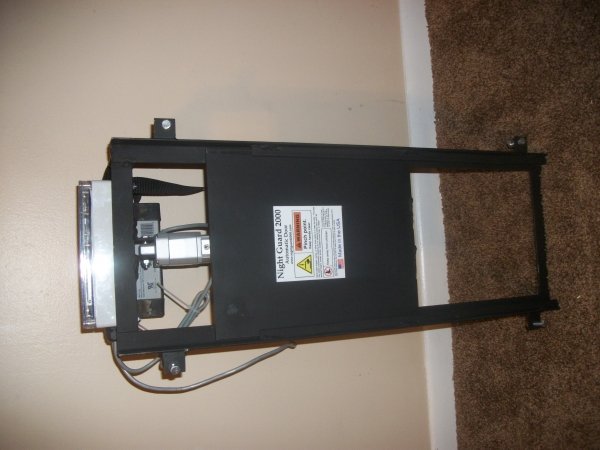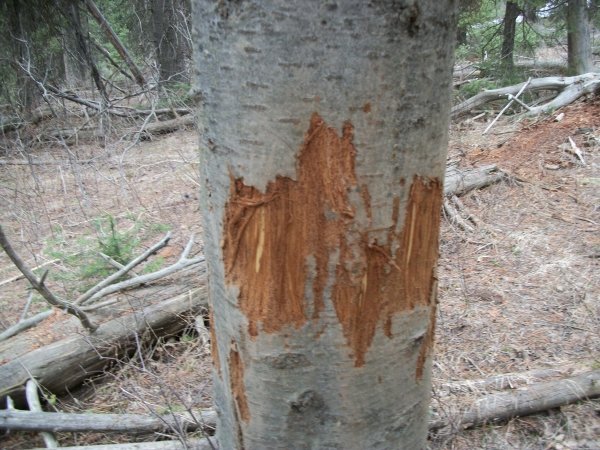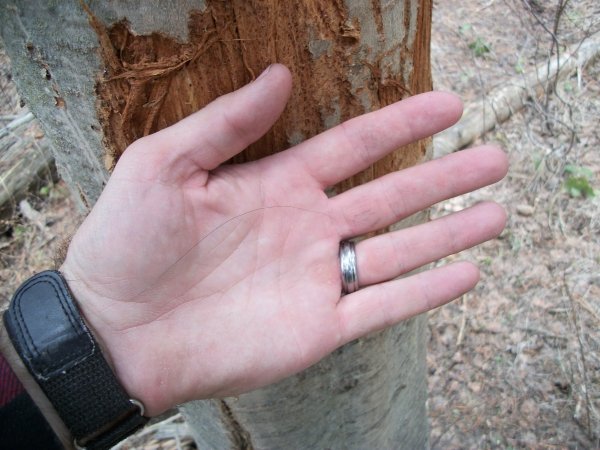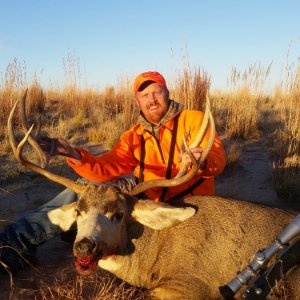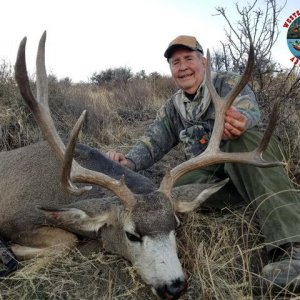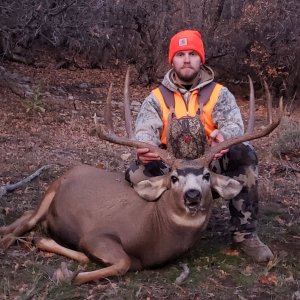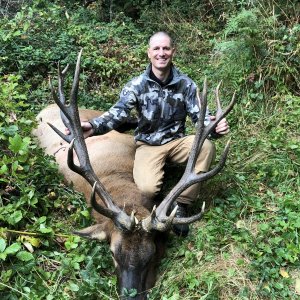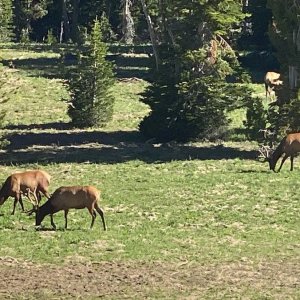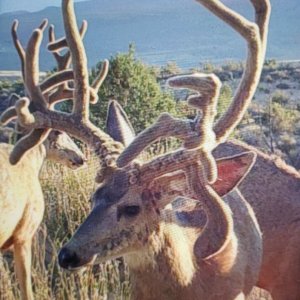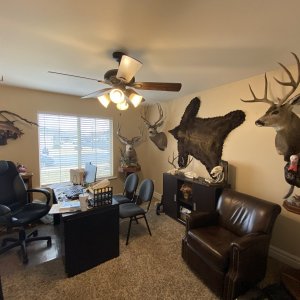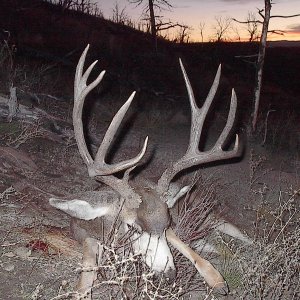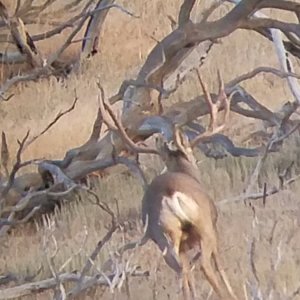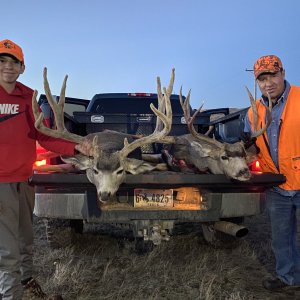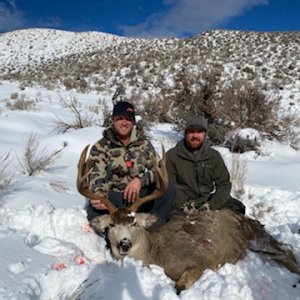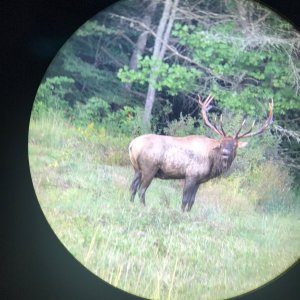idelkslayer
Active Member
- Messages
- 201
I hadn't really planned on doing a bear hunt this year. I killed a small black boar last spring and prior to that had killed a similar sized black boar and a cinnamon colored sow. Bear hunting over bait is a lot of work and I planned to take 2015 off. Then in December I got a call from one of my best friends and he told me about a new product he had invented for bear hunting and wondered if I would be willing to use it and tell other people about it to help him get the word out. It is called the nightguard 2000. So I thought that rather than make a plug for him in the form of a review I would do a live hunt and let everyone see how it works. But first some background.
James and I first started bear hunting in 2008. He was the first to be successful and without his early success I might have given up on the venture. We started baiting in the fall of 2008, like I said he was successful and I wasn?t. He had found a really good area loaded with bears and my site never got hit but after he killed his bear he let me sit at his site until the season ended. The next spring I tried a different spot and didn't get any hits until the season had ended. That fall a large sow and her cubs frequented my bait site but no other bears came around. James got another bear in the fall of 2009 and that helped keep me excited to try again. In 2010 I finally found an area that had some sign and set up a bait site. I killed a 5 foot black boar that spring when I was walking in to check the site. 2011 I was unable to return to my successful site and didn't get a bear in my other spots. James killed another couple bears during this time.
When I moved in 2012 I made it a priority to find a really good site to set my bait. Another friend and I hiked several drainages looking for a good spot that had a good combination of cover, shooting lanes and proximity to water. Distance from the road is another important consideration. Too close and someone else may find it or in the least disrupt it, too far and it could be a lot more work than it needs to be. We found a spot about 1 mile from the road that had some bear sign. Several bears were soon working the site and I ended up killing a cinnamon colored sow at last light after my third day of sitting in wait. In 2013 I returned but all of the bears were only coming at night. In 2014 I tried again and shot a small boar at last light on the only day I sat in my stand.
Like I said I was planning on taking a break from bear hunting this spring until James told me about the nightguard. It is an automatic door that mounts into a 55 gallon drum. It can be set to open and close at any time you want but comes with the default of opening 30 minutes before sunrise and closing 30 minutes after sunset. The idea being two-fold. First, by having the door closed at night it will prevent night bears from cleaning you out and will make your bait last longer. This translates into fewer trips to the site and saves on bait and gas. The second purpose is to force bears to come in during daylight hours aka legal shooting hours.
James is an electrical engineer and has been working on this for last 2 years. Prior to this I saw a few of his other bear baiting ideas in development and this is the culmination of 5 years of experimenting.
His website is https://nightguard-auto-bear-baiting...r-baiting-door
or just google nightguard 2000
So I'll begin the live hunt with my preparation for hunt.
James and I first started bear hunting in 2008. He was the first to be successful and without his early success I might have given up on the venture. We started baiting in the fall of 2008, like I said he was successful and I wasn?t. He had found a really good area loaded with bears and my site never got hit but after he killed his bear he let me sit at his site until the season ended. The next spring I tried a different spot and didn't get any hits until the season had ended. That fall a large sow and her cubs frequented my bait site but no other bears came around. James got another bear in the fall of 2009 and that helped keep me excited to try again. In 2010 I finally found an area that had some sign and set up a bait site. I killed a 5 foot black boar that spring when I was walking in to check the site. 2011 I was unable to return to my successful site and didn't get a bear in my other spots. James killed another couple bears during this time.
When I moved in 2012 I made it a priority to find a really good site to set my bait. Another friend and I hiked several drainages looking for a good spot that had a good combination of cover, shooting lanes and proximity to water. Distance from the road is another important consideration. Too close and someone else may find it or in the least disrupt it, too far and it could be a lot more work than it needs to be. We found a spot about 1 mile from the road that had some bear sign. Several bears were soon working the site and I ended up killing a cinnamon colored sow at last light after my third day of sitting in wait. In 2013 I returned but all of the bears were only coming at night. In 2014 I tried again and shot a small boar at last light on the only day I sat in my stand.
Like I said I was planning on taking a break from bear hunting this spring until James told me about the nightguard. It is an automatic door that mounts into a 55 gallon drum. It can be set to open and close at any time you want but comes with the default of opening 30 minutes before sunrise and closing 30 minutes after sunset. The idea being two-fold. First, by having the door closed at night it will prevent night bears from cleaning you out and will make your bait last longer. This translates into fewer trips to the site and saves on bait and gas. The second purpose is to force bears to come in during daylight hours aka legal shooting hours.
James is an electrical engineer and has been working on this for last 2 years. Prior to this I saw a few of his other bear baiting ideas in development and this is the culmination of 5 years of experimenting.
His website is https://nightguard-auto-bear-baiting...r-baiting-door
or just google nightguard 2000
So I'll begin the live hunt with my preparation for hunt.

